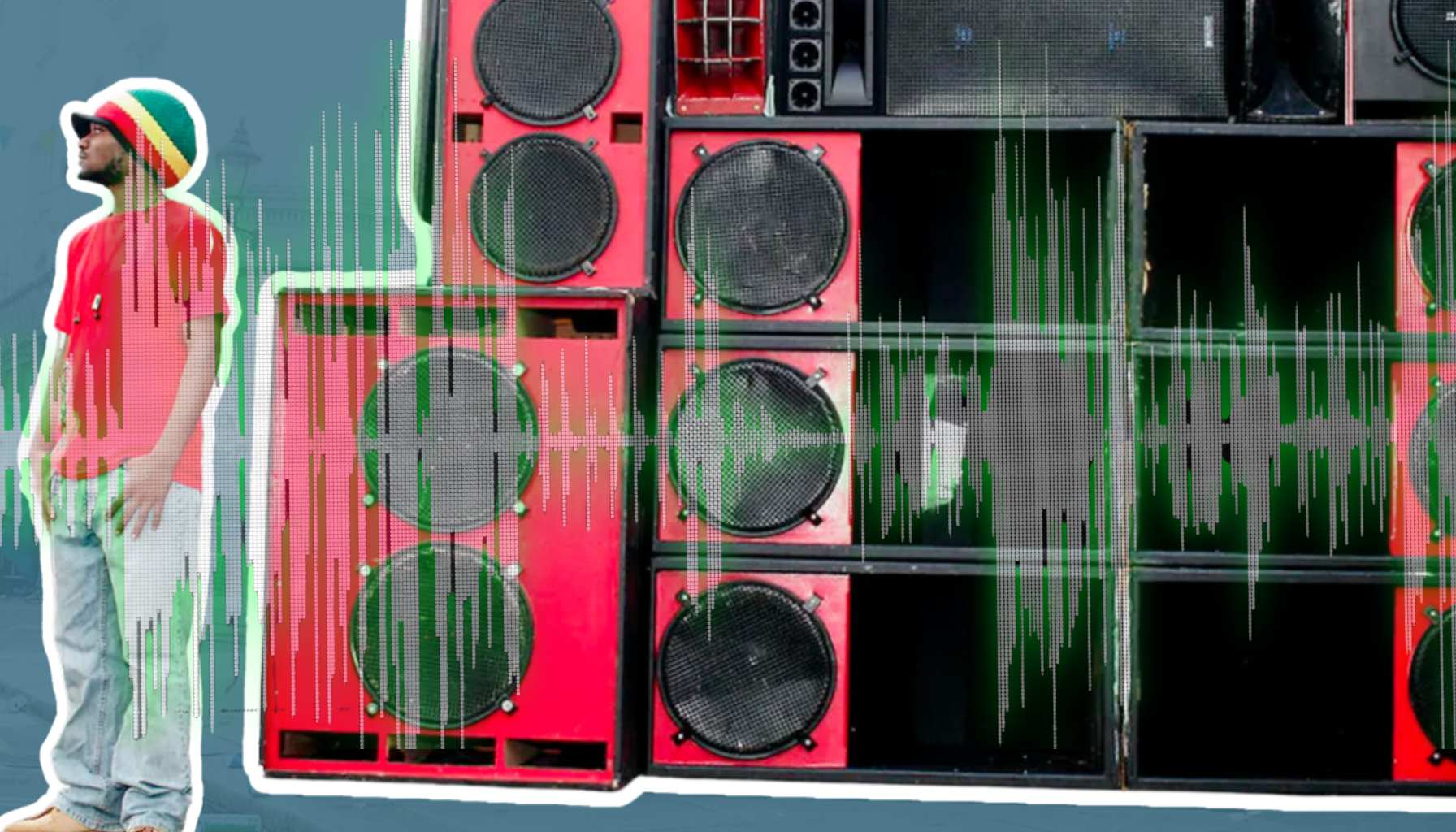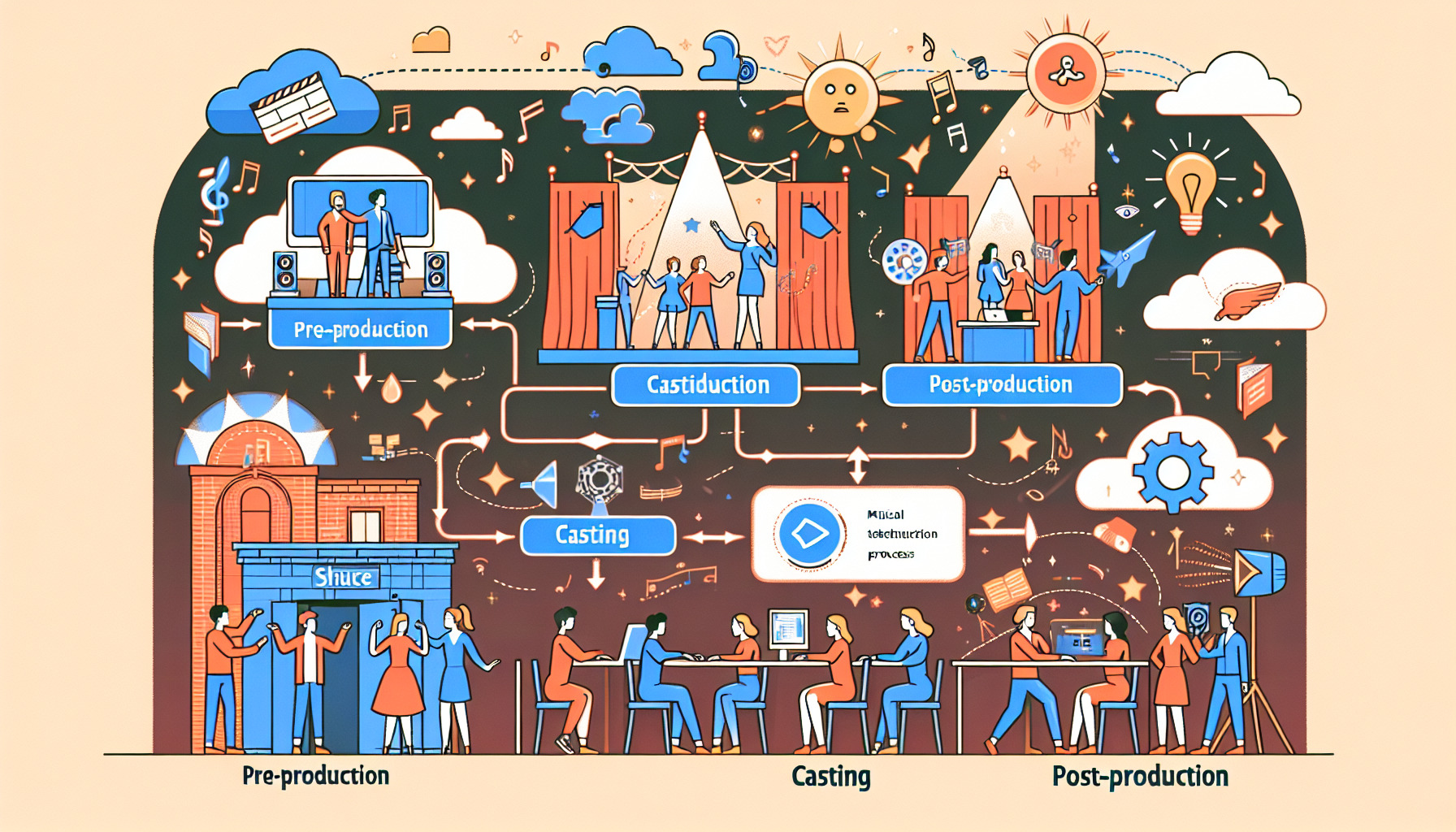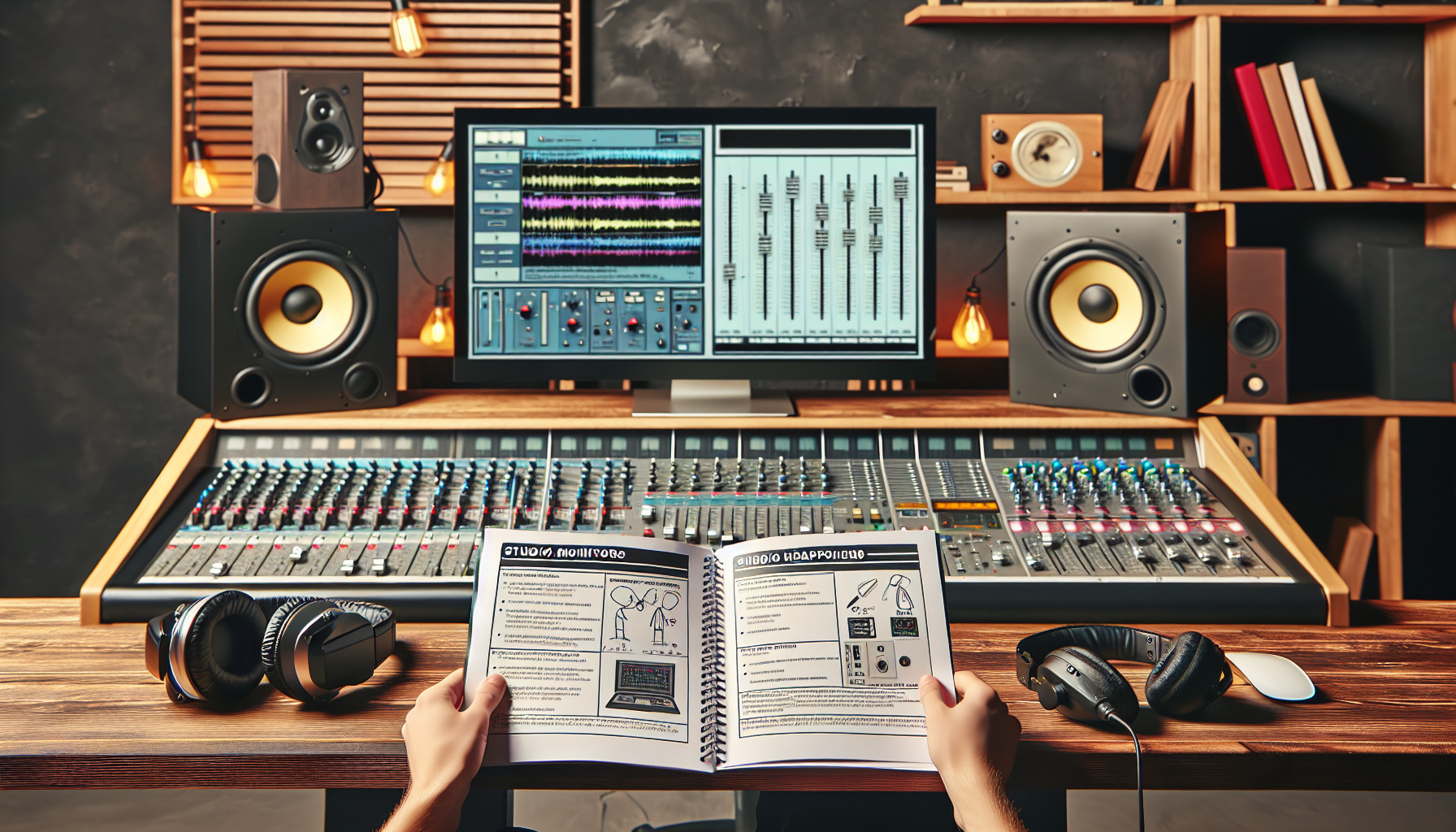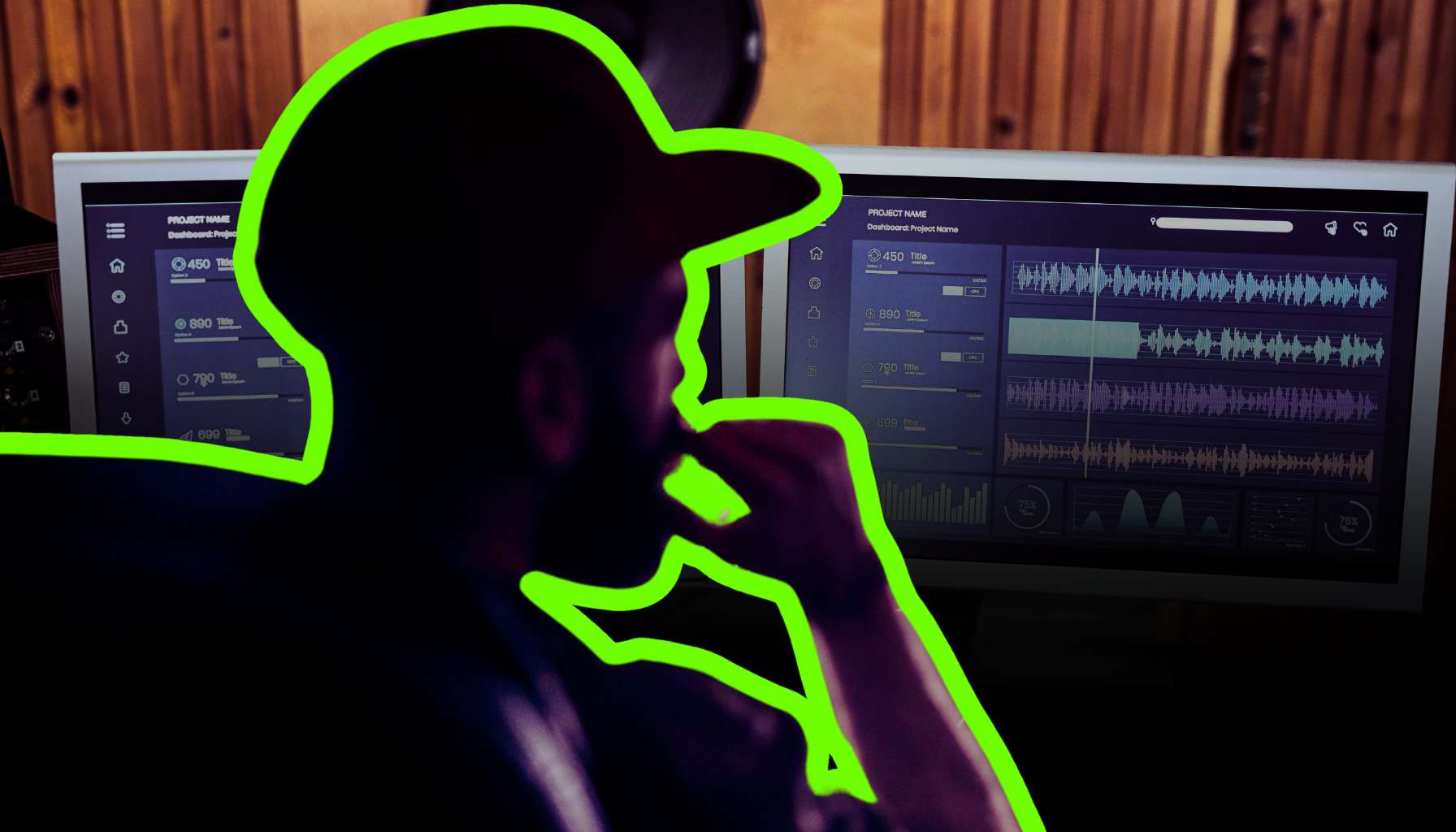
Introduction: Crafting the Sonic Grandeur
Ever been to a concert where the sound was so immense, it seemed to swallow you whole? That’s no accident, my friend—that’s the power of larger-than-life music production. In this sonic playground, we’re not just filling the space; we’re creating entire universes for ears to explore. So, what’s the secret sauce? Let’s dive in.
Defining Larger-than-life Music Production
It starts with the vibe, that gut feeling you can’t shake. Immersive and epic tracks have this knack for grabbing you by the soul and not letting go. We’re talking about those characteristics that make your hair stand up: the booming bass, the soaring strings, and melodies that carve their names into your memory.
But it’s not just about being loud; it’s the emotional impact, the way the music connects with the audience on a visceral level. It’s the soundtrack of superheroes, the battle cry in a fantasy epic, and the power ballad that left you speechless that one time in your car.
The Role of Arrangement in Achieving Monumental Sound
Now, don’t confuse arrangement with your grandma’s living room setup. In music, arrangement is the unsung hero, the blueprint of a track. It’s what distinguishes a composition from just a string of notes and elevates a production from good to legendary. Building the foundation for a memorable listening experience is like constructing a cathedral for sound.
Each element, from the timpani that rumbles the floor to the choir that pierces the heavens, has its place. It’s about balance, dynamics, and knowing when to whisper and when to roar. As we set the stage for grandiose soundscapes, let’s not forget the journey ahead. Up next, in Section II, we’ll unravel the magic of dynamic layering to enhance depth and complexity.
Think of it as adding dimensions to a painting, each stroke contributing to the illusion of depth, making the image pop off the canvas and come to life. Ready to roll up your sleeves and delve into the world of counter melodies, supporting harmonies, and textural soundscapes? Stay tuned, because we’re about to turn the volume up to eleven and give your tracks the depth of an ocean and the impact of a meteor strike.
Dynamic Layering to Enhance Depth and Complexity
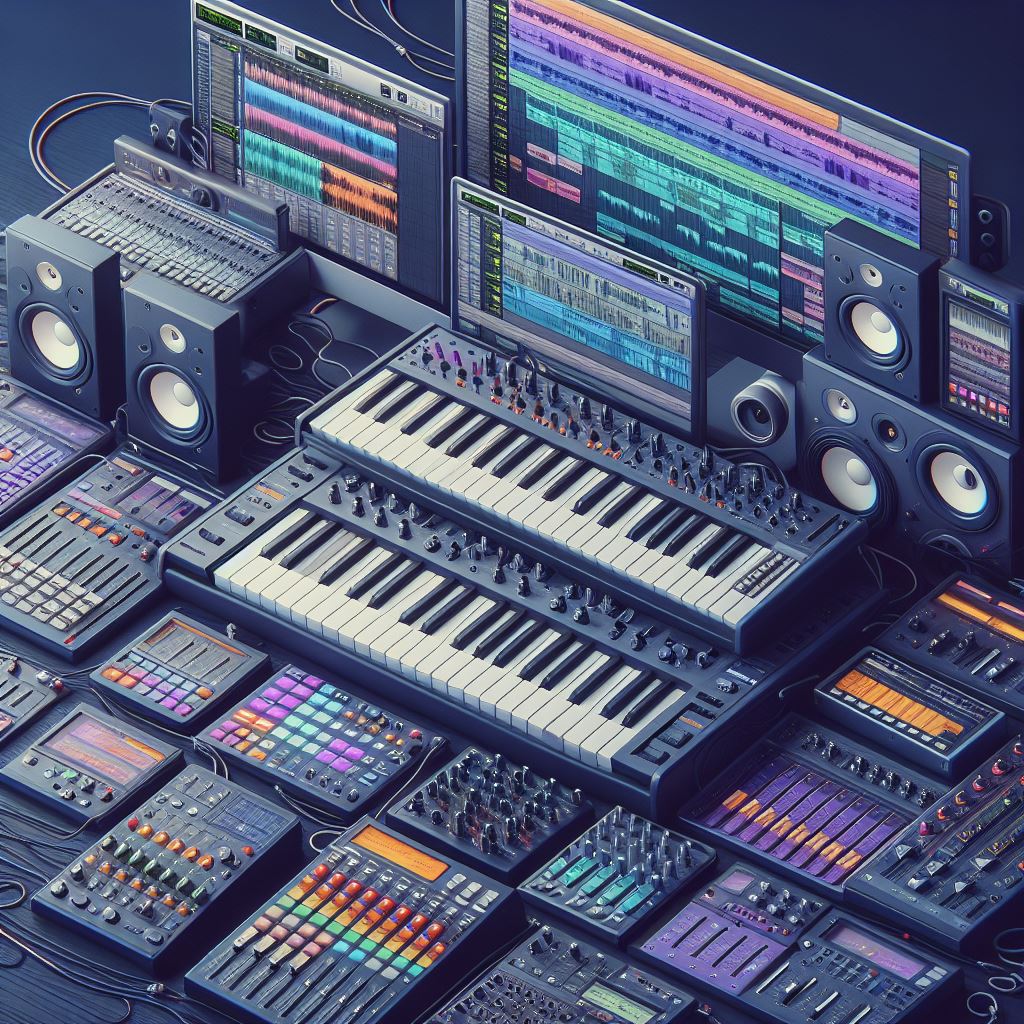
So you’ve set the stage for an epic sound experience, and now it’s time to dive deeper into the rabbit hole of arrangement. Let’s get our hands dirty with dynamic layering, the secret weapon that turns a flat sketch into a 3D masterpiece. Ready to give your track that “whoa” factor? Buckle up, because we’re about to take your sound from “meh” to monumental.
Utilizing Harmonic and Textural Layers
First off, let’s talk about building a sonic skyscraper with harmonic and textural layers. Imagine a cake—sure, a single layer of sponge is nice, but what if you could have multiple layers with cream, fruit, and icing? Now we’re talking! Incorporating counter melodies and supporting harmonies is like adding those extra layers of deliciousness.
These aren’t just any old notes thrown together; they’re carefully selected sounds that play hide and seek with your main melody, peeking out at just the right moments to surprise and delight your ears. And let’s not forget about designing textural soundscapes with pads and strings. These are the lush green lawns and serene ponds in your musical landscape.
Pads give you that warm, fuzzy blanket of sound, while strings can range from a gentle caress to a dramatic surge. Together, they create a backdrop so rich, you could swim in it.
Creating Rhythmic Interest with Percussive Elements
Now, what’s a good tune without a little toe-tapping or head-nodding? Percussive elements are your rhythm section’s secret sauce. They’re the heartbeat of your track, pumping energy into the veins of your arrangement. Adding supplementary rhythmic layers is like having a team of backup dancers for your lead percussionist. They fill in the gaps, accentuate the groove, and can turn a simple beat into a complex, pulsating organism.
But hey, it’s not always about going full throttle. Playing with dynamics—contrast between percussive intensity and restraint—is like the ebb and flow of the ocean. It’s the difference between a relentless onslaught of sound and a journey with peaks and valleys that keeps the listener hooked.
As we move from the energetic pulse of percussion to the vastness of space and silence in Section III, remember that sometimes it’s the quiet moments that speak the loudest. We’re about to explore how strategic breaks and silence can be as powerful as any note played, giving your epic arrangement the breathing room it needs to truly resonate. Get ready to master the art of the pause, because in the world of larger-than-life tracks, it’s not just about filling space—it’s about knowing when to leave it wide open.
The Power of Space and Silence in Arrangement
Let’s hit the brakes for a second, shall we? After all the complex layering and rhythmic gymnastics, it’s time to talk about the elephant in the room: space and silence. That’s right, sometimes the most powerful note is the one you don’t play. In the grand tapestry of sound, the voids are just as important as the threads. So how do you harness the power of nothingness to make your tracks truly epic?
Strategic Use of Breaks and Silence
Think about the last time you were telling a killer joke or a gripping story. You didn’t just blurt it out in one breath, did you? No, you used pauses—dramatic ones, awkward ones, the works—to amplify the impact. Music’s no different. Strategic pauses can make a chorus hit like a freight train or a drop feel like freefalling from the stratosphere.
Using silence as a tool for tension and release is a crafty move. It’s the musical equivalent of a cliffhanger that has the audience leaning in, holding their breath, waiting for the beat to drop or the chorus to explode. And when it does, the payoff is immense. Silence isn’t just absence of sound; it’s the canvas for anticipation.
Balancing Density and Minimalism
Now, on to the balancing act. Imagine you’re at an all-you-can-eat buffet. You don’t just pile on everything until your plate’s a mountain of mush, right? You curate your meal. Similarly, in music, achieving power through simplified segments is about choosing what to highlight and what to strip back. The art of subtraction for greater impact is like sculpting: chipping away at the marble block to reveal the masterpiece within.
Sometimes, less is epic. A solitary piano note echoing in a cathedral can hit you harder than a whole orchestra going full tilt. It’s about contrast, about giving your arrangement the room to breathe and the space to soar.
As we move forward to Section IV, keep in mind that every epic journey has its lulls and crescendos. We’re about to dive into arrangement techniques for building momentum, guiding the listener’s journey from the tranquility of open space to the rush of the climax.
Get ready to transition from the power of pause to the art of escalation, where every build-up leads to a moment of exhilarating release. In the next chapter, we’ll explore how to craft peaks in your arrangement and master the calculated release of the drop, because in the symphony of larger-than-life tracks, every silence sets the stage for a sound that shakes the soul.
Arrangement Techniques for Building Momentum
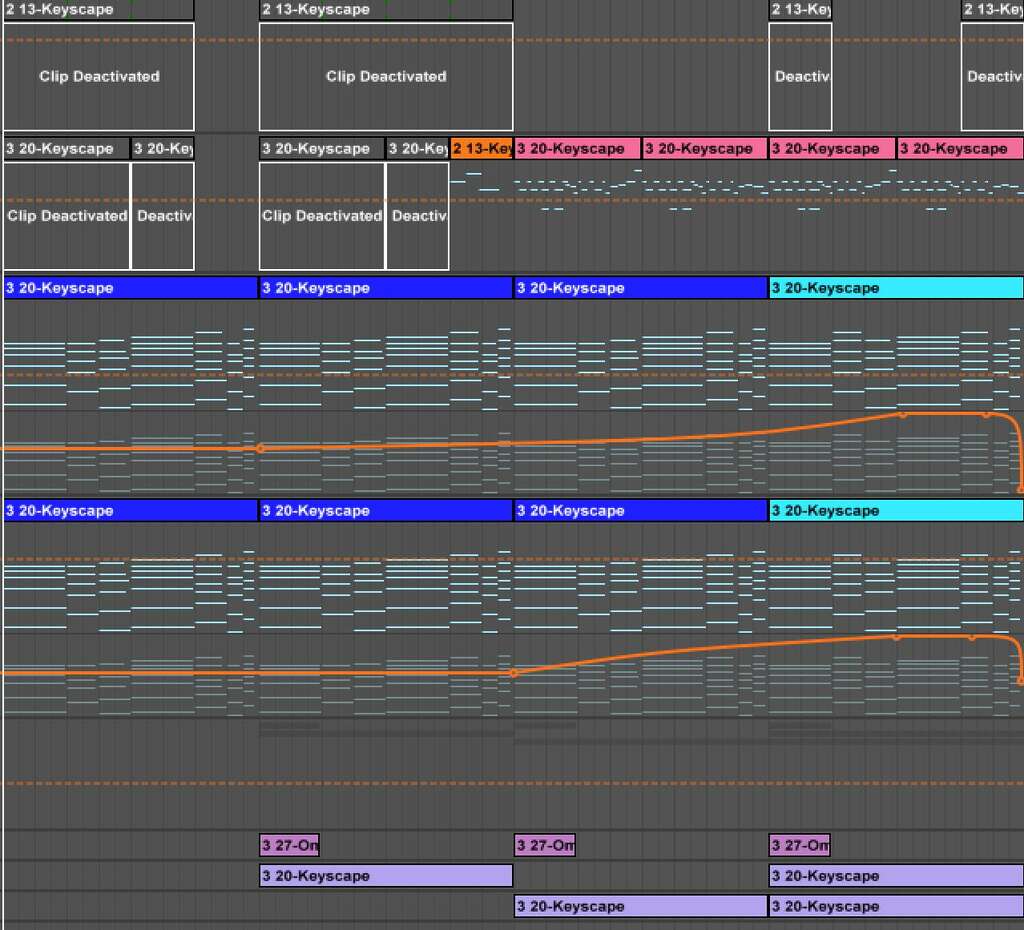
As we wave goodbye to the tranquil power of silence, let’s march into the heart-thumping realm of building momentum. Ever wonder how some tracks seem to have a gravitational pull, dragging you from a gentle intro to a full-on cosmic explosion? Well, it’s not rocket science—it’s crafty arrangement. Here, we’ll explore how to steer your listeners through an emotional rollercoaster, where every twist, turn, and loop is by design.
Progressive Structure: Guide the Listener’s Journey
Think of your track as a story, one where the listener is the hero embarking on an adventure. A progressive structure is your narrative arc, the guiding force that moves from simplicity to complexity, much like a plot unfolding. It’s about modulating energy levels through the track, starting with a whisper and escalating to a scream that echoes in the void. But how do you do it?
It’s like playing Jenga with sound—you build up layer by layer, ensuring each block adds tension and anticipation. You introduce elements, pull them back, then reintroduce them with a new friend or two. It’s a delicate dance between expectation and surprise, keeping listeners on the edge of their seats, or better yet, on the tips of their toes.
Using Climaxes and Drops Effectively
Now, let’s crank it up a notch. Crafting peaks in your arrangement is about pinpointing those goosebump-inducing moments and milking them for all they’re worth. These are your musical mountaintops, the breathtaking views that make the climb worthwhile. But what goes up must come down, and the calculated release—the mastering of the drop—is what separates the amateurs from the maestros.
A drop isn’t just about stripping down to a bass line and a kick; it’s the culmination of all the tension you’ve built, the release valve that sends the crowd into a frenzy. It’s controlled chaos, a moment where everything aligns and the world seems to stand still before diving back into the abyss. As we gear up for Section V, remember that the path to epicness is a journey of ups and downs. And just when you think you’ve seen it all, we’ll throw in a curveball with unexpected elements and surprises.
Because in the grand quest for larger-than-life tracks, it’s the twists in the tale that make the story unforgettable. Stay tuned as we introduce unorthodox instruments and sounds that defy expectations, blend genres for a novel listening experience, and employ diverse effects to reset what you thought you knew about epic music. It’s about to get weird, in the best way possible.
Incorporating Unexpected Elements and Surprises
After the build-up of momentum, it’s time to spice up the sonic journey with some unexpected zing—think of it as the secret sauce that gives your track that “Wait, what was THAT?” moment. In the world of music production, surprises not only delight but they also stamp your sound with a signature that screams originality.
It’s like finding a hidden level in your favorite video game; it thrills, it excites, and it keeps you coming back for more.
Introducing Unorthodox Instruments and Sounds
Who said you have to stick to the script? Toss in a didgeridoo, sprinkle some shamisen, or maybe drop a beat with a hang drum. Exploring world instruments and unique textures can transport your listeners to places they never expected to go in a four-minute track. This isn’t just about being different for the sake of it; it’s about weaving a tapestry of sound that’s as global as your potential audience.
But why stop at instruments? The sound of a cityscape, the rhythmic chugging of a train, or the serene silence of a snowfall can all be part of your palette. It’s about painting with sound, blending genres for a novel listening experience that defies the mundane and elevates the extraordinary.
Utilizing Diverse Effects and Production Techniques
Effects are not just garnish; they can be the main course. From the subtle to the surreal, smart effects usage can transform a straightforward arrangement into a mind-bending experience. Think about how a simple delay can turn a single note into a cascading waterfall of echoes, or how distortion can morph a mild-mannered guitar into a snarling beast.
Innovative processing can reset listener expectations, making the familiar unfamiliar and the mundane magical. It’s the aural equivalent of a magician pulling a rabbit out of a hat—a well-timed production trick can make jaws drop and ears perk up. As we segue into Section VI, remember that the unexpected doesn’t just surprise; it captivates. It’s time to delve into how melody and harmony can tug at heartstrings and evoke the kind of emotions that make music a universal language.
From crafting memorable melodic themes to using harmonic choices to stir souls, we’re about to explore the pillars that uphold the cathedrals of sound we’ve been building. So, keep your ears open and your mind ready for a dive into the deep end of melody and harmony. Expect to learn how to make melodies soar and chord progressions that resonate, ensuring your tracks aren’t just heard—they’re felt.
The Impact of Melody and Harmony in Epic Arrangements
Buckle up, folks, because we’re diving headfirst into the soul-stirring seas of melody and harmony. After tickling your fancy with the unexpected, let’s get down to the bread and butter of any track that aspires to grandeur: the tunes that stick and the chords that stir. These are the elements that will have your listeners humming in the shower or tearing up on a bus ride home because, let’s face it, melody and harmony are the heavyweights in the ring of emotional knockout.
Crafting Memorable Melodic Themes
Now, a memorable melody is like that one friend who never ages – timeless and instantly recognizable. But how do you concoct this elixir of musical immortality? It’s a mix of inspiration, perspiration, and a little bit of magic. The role of memorable themes in grand tracks is akin to the protagonist in an epic saga – it’s the hero that carries the story on its shoulders, from the humble beginnings to the triumphant finale.
To make melodies soar, you need to tap into the universal jukebox of the human psyche. It’s about crafting a sequence of notes that resonates on a primal level, employing techniques like repetition with variation, and building upon a motif that becomes the north star of your track. Remember, the strongest melodies are often simple but sung with conviction, so don’t overcomplicate things – let the melody breathe and take life of its own.
Harmonic Choices to Evoke Emotions
If melody is the story, harmony is the color palette that sets the mood. It’s the backdrop that can make a scene serene or laden with tension. The right chord progressions resonate with listeners by speaking the unspoken language of the soul. Whether you’re tugging at heartstrings with a minor key or lifting spirits with a major progression, your harmonic choices are the invisible hands that sculpt the listener’s emotional journey.
And let’s not forget modulations – the plot twists of music theory. They’re the equivalent of jumping from a speeding train onto a horse mid-gallop. When done right, using modulations to intensify feelings can elevate a track from ‘meh’ to ‘more, please!’
As we prepare to march into Section VII, let’s not lose sight of the fact that melody and harmony are just two sides of the same coin. In the next section, we’ll see how layering vocals can add richness and power to our already epic arrangement, creating a choral effect that can fill cathedrals or delicate vocal stacks that can whisper directly to the heart. It’s all about using the human voice as the ultimate instrument to convey the raw emotion and storytelling of your track. Stay tuned, the best is yet to be sung.
Maximizing Vocal Arrangements
Just when you thought our epic track couldn’t climb any higher, we’re about to unleash the power of the human voice. If you’ve ever been floored by a chorus so powerful it seems to rattle the stars themselves, you know the might of well-arranged vocals. They’re not just the cherry on top; they’re the soul of the song, capable of launching it into the stratosphere. Let’s dive into the art of vocal arrangements and ensure your tracks aren’t just heard—they’re felt deep in the marrow.
Layering Vocals for Richness and Power
The magic of layering vocals lies in its ability to transform a single voice into an army of harmony. With harmonizing and doubling techniques, one singer can become a choir, and a choir can become an otherworldly force. It’s like cloning your best troops in the heat of battle—suddenly, you’re not just fighting; you’re dominating. But don’t just stack vocals willy-nilly. Choral effects and vocal stacks should be crafted for immensity, each layer purposefully enhancing the overall sound without muddying the waters. Think of it as weaving a sonic tapestry—each thread must complement the others, or you’ll end up with a knotty mess.
Spotlighting the Vocal Performance
Now, spotlighting the vocal performance is like framing the Mona Lisa—everything surrounding it must accentuate its beauty without stealing the show. Arranging instruments to complement vocal lines is a delicate balancing act. It’s about creating space for the voice to shine, ensuring that every strum, hit, or blast serves the song’s vocal overlord. And let’s not forget the art of backing vocals and ad-libs. These are the secret spices that can elevate a good track to a great one.
Ad-libs are the vocalist’s chance to improvise, to add a dash of personality, and to make a track truly their own. They’re the vocal equivalent of a guitarist’s face-melting solo—unrestrained, unexpected, and unforgettable. As we gear up for Section VIII, we’re taking all the vocal gold we’ve mined and setting the stage for instrumental mastery.
Selecting the right instruments and honing their arrangement is crucial for reinforcing the epic soundscape we’ve been constructing. From the booming depth of a bass to the celestial twinkle of a glockenspiel, each instrument has a role to play in our symphony of grandeur. So, prepare to delve into the nitty-gritty of instrumental proficiency and technical aspects.
It’s about choosing the right tools for the job and wielding them with the precision of a master craftsman. After all, in the quest for a larger-than-life sound, every note matters, and every sound counts.
Instrumental Proficiency and Technical Aspects
With the vocal layers set to stun, we pivot to the instrumental gladiators in the arena of our larger-than-life track. Every strum, hit, and key press is a building block in the towering structure of sound we’re constructing. But this isn’t just about having the chops to play fast and loud. It’s about selecting and arranging instruments with the kind of precision that would make a Swiss watchmaker weep with joy.
Selecting and Arranging for Impact
Instrument choices shape the track’s identity as surely as DNA determines eye color. Whether it’s the guttural growl of a bass guitar or the ethereal whisper of a synth pad, each instrument must earn its place in the mix. It’s not about cramming every cool sound you can find into the arrangement; it’s about crafting a sonic ecosystem where each element complements the others, creating a balanced and impactful whole.
Arranging instruments for maximum effectiveness is like conducting an orchestra where every musician is a rock star in their own right. It’s about harnessing their strengths and ensuring that when the spotlight hits, they’re ready to shine. This isn’t just a job for the ears; it’s a task for the heart, because when those instruments sing in harmony, they should make you feel something powerful.
Mixing Strategies for Larger-than-life Sound
Once you’ve chosen your instrumental arsenal, the next battlefield is the mix. Balancing the mix for clarity and weight is akin to a tightrope walk over the Grand Canyon. It’s about giving each element room to breathe while maintaining a cohesive sound that’s as deep as it is wide. This isn’t a place for the timid. It’s a place for bold decisions and even bolder execution.
Techniques for enhancing width and perception of size are the secret weapons in your mixing toolkit. Panning, reverb, and EQ are not just knobs and sliders—they’re paintbrushes and sculpting tools. Use them to carve out spaces for each instrument, creating a three-dimensional soundscape that envelops the listener in a warm embrace of auditory bliss.
As we prepare to wrap up our symphonic saga in Section IX, remember that every great track is more than the sum of its parts. It’s a carefully orchestrated dance of melody, harmony, rhythm, and timbre. In our conclusion, we’ll reflect on the pillars of monumental arrangement and how they come together to bring an epic vision to life.
So stay tuned, as we’ll soon tie all these threads together, offering a recap of key arrangement principles for grand tracks and contemplating the intangible journey from concept to final master. After all, it’s one thing to dream big—it’s another to make those dreams resonate through speakers around the world.
Conclusion: Bringing an Epic Vision to Life
We’ve trekked through the sonic wilderness, from the fertile plains of melody and harmony to the towering peaks of instrumental proficiency. Now, as we reach the summit of our epic journey, let’s take a moment to gaze out at the sprawling landscape we’ve traversed and reflect on the pillars of monumental arrangement.
Reflecting on the Pillars of Monumental Arrangement
Our expedition began with the basics of larger-than-life music production, touching on the emotive power of immersive tracks and their connection with audiences. We’ve seen how dynamic layering adds depth, how space and silence can amplify impact, and how building momentum through arrangement leads listeners on a transformative journey.
The recap of key arrangement principles for grand tracks isn’t just a summary; it’s a treasure map to crafting anthems that resonate with the human spirit. The role of unexpected elements and the alchemy of melody and harmony are the secret ingredients to an auditory feast that leaves listeners hungry for more.
Continual Learning and Adaptation
Yet, the true master knows that the journey never ends. Keeping up with evolving standards in music production is like surfing on the edge of a wave – exhilarating, yes, but also requiring agility and an eye for the next big swell. Futuristic approaches and innovation are the compasses guiding us toward uncharted territories in sound.
Staying innovative in this sonic odyssey means embracing change, whether it’s the latest technology, novel production techniques, or a shift in cultural tastes. It’s about being fearless in experimentation, knowing that every failure is a step closer to that jaw-dropping track that will be played on repeat.





